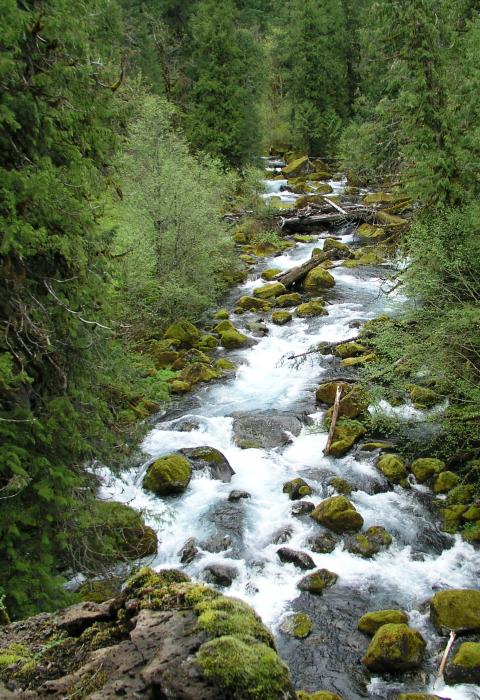McKenzie River
Oregon
The McKenzie River originates at Clear Lake in the central Oregon Cascades and flows south and west through the Willamette National Forest. Recent volcanism, including three distinctive lava flows, has shaped the river into pools, dramatic waterfalls, and cascading whitewater. These features provide for exceptional whitewater boating, hiking, and fishing.
Designated Reach
October 28, 1988. From Clear Creek to Scott Creek, not including Carmen and Trail Bridge Reservoir Dams.
Outstandingly Remarkable Values
Fish
The McKenzie River has excellent quality fish habitat that supports a variety of fish species, including three native wild trout—rainbow, bull, and cutthroat—as well as wild spring chinook.
Geology
The upper McKenzie River Basin is fascinating, because it has undergone several violent transformations in the recent geological past. The basin was the site of frequent volcanic activity, and the river has cut through numerous layers of tuff (consolidated volcanic ash) and basalt flows, and the course of the McKenzie River has been altered by lava flows. A geologically recent basalt flow is responsible for the formation of Clear Lake. Lava flows which poured from the Belknap Crater dammed up part of the McKenzie, creating the spectacular Sahalie and Koosah waterfalls.
Recreation
The McKenzie River is an important and valuable river to Oregon in terms of challenging the skills of whitewater rafters, kayakers, and drift boaters. Its close proximity to the Eugene-Springfield area helps make it one of the most popular developed and dispersed recreational areas easily accessible from the Willamette Valley. Another highlight is the 26-mile McKenzie National Recreation Trail which provides recreation opportunities and allows easy accessibility to some spectacular geological phenomenon.
Scenery
The McKenzie River endures a national reputation for its outstanding scenery, cold, clear water, and magnificent vegetation and is also classified as a scenic waterway by the state of Oregon.
Water Quality
The “Blue McKenzie” is well-known for its exceptional water quality, resulting from low turbidity, absence of organic material, and the excellent water quality of its tributaries.
Managing Partners And Contacts
Documents
Classification/Mileage
Video
2015 was the 50-year anniversary of the Wild and Scenic Rivers Act. Passed by Congress and signed into law by President Lyndon B. Johnson, the Wild and Scenic Rivers Act ensures that designated rivers across the USA be protected from dams, over-development, and other obstructions that would keep them from flowing freely. John Williams takes you to several of the Northwest's Wild and Scenic Rivers to show you various accessible recreations.

